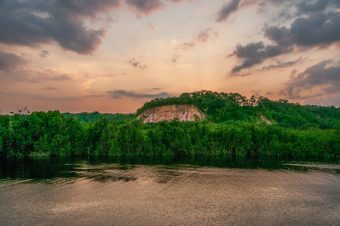
According to the latest research by the non-governmental organization Greenpeace, loans from Brazilian national and international banks and taxpayers’ money finance the illegal clearing of the Amazon rainforest.
The investigation analyzed the granting of loans for agricultural production in Brazil from 2018 to 2022 and found cases where agricultural activities were financed this way despite being environmentally harmful.
In a report titled Banked Extinction: Banks and Investors as Partners in Deforestation, Greenpeace reveals that over $8.6 million has been lent to rural properties where illegal deforestation, land grabbing, irregular cattle ranching and overlapping with protected areas or completely covering these areas have occurred.
Greenpeace has identified as many as 10,074 properties that are partially or fully located in protected areas where agricultural activity should be prohibited. Twenty–four properties overlap with native habitats, while 21,692 properties overlap with unprotected public forests.
The report also shows that 798 properties embargoed by Brazil’s environmental agency IBAMA also received financing.
Greenpeace said that industrial agriculture is the main driver of deforestation in Brazil, as almost 96 per cent of the forest cut in 2022 was due to agriculture. Deforestation causes the loss of habitat for wild species and, thus, biodiversity loss. Furthermore, illegal logging is the main source of greenhouse gas emissions in Brazil – 48 per cent of the country’s emissions in 2022 were caused by deforestation. Adding to this the fact that agricultural activities emit 27 per cent of greenhouse gases, we can conclude that this sector is responsible for 75 per cent of total emissions in Brazil.
More:
- HOW AGRICULTURE ENDANGERED THE WORLD’S MOST BIODIVERSE SAVANNAH
- DEFORESTATION CONTRIBUTES TO INCREASED MERCURY POLLUTION – AFFORESTATION REDUCES IT
- COSTS OF INDUSTRIAL POLLUTION FROM LARGEST FACILITIES DECLINE IN EUROPE BUT REMAIN AT TWO PER CENT OF EU GDP
Current policy and hopes for the Amazon
According to a statement from the World Resources Institute, forest loss declined significantly in Brazil and Colombia in 2023 due to current policies prioritizing forest protection.
Thus, Brazil saw a 36 per cent reduction in primary forest loss last year, reaching its lowest level since 2015, while in Colombia, primary forest loss was halved in 2023 compared to 2022.
However, although Brazilian President Luiz Inacio Lula da Silva and Colombian President Gustavo Petro have placed great importance on protecting the Amazon rainforest, the world is still far from the goal of zero deforestation by 2030. Tropical areas lost 3.7 million hectares of primary forests last year, an area slightly smaller than Bhutan.





